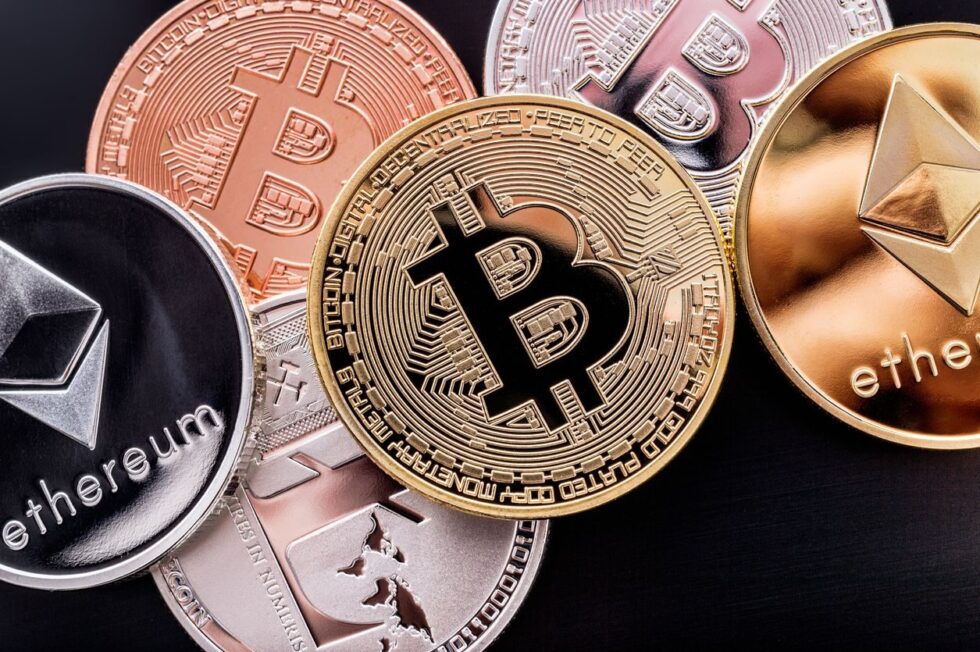How to Pay with Cryptocurrency via a Crypto Wallet: Tips and Examples

Cryptocurrencies are no longer just an investment tool; they have become a practical means of payment in many parts of the world. Today, you can use them to buy airline tickets, book hotel stays, order electronic devices, or even pay for dinner in certain restaurants across Europe. To make such payments secure and convenient, a crypto wallet is essential. It is the primary tool for storing digital assets and carrying out transactions. However, beginners are often intimidated by technical terms and fear losing funds due to mistakes. That’s why it is crucial to understand in detail how crypto payments work, what types of wallets exist, and which security measures should be followed. Once these basics are clear, cryptocurrencies can be used in everyday life almost as easily as bank cards, reports the editorial team at G.business.
What is a crypto wallet and how does it work
ACrypto wallets form the foundation of the cryptocurrency payment ecosystem. Without a wallet, users cannot send, receive, or store their digital assets. While the coins themselves remain on the blockchain, the wallet provides the private keys required to access and prove ownership of those assets. This design makes wallets both powerful and sensitive: whoever controls the private key controls the money. Different wallet types approach security and usability differently. Online solutions provide quick access but expose users to hacking risks. Hardware wallets offer maximum safety but require more effort to set up. Mobile wallets are convenient for daily transactions, while desktop wallets attract those who want greater control. Choosing the right wallet depends heavily on how often you plan to use crypto and how much you need to protect.
Understanding the concept of wallets and keys
At the heart of every crypto wallet are two components: the private key and the public address. The private key is like a password and must never be shared, while the public address works like a bank account number that can be disclosed freely. When a payment is sent, the wallet uses the private key to sign the transaction, proving it is legitimate. This signed transaction is then broadcast to the blockchain network, where nodes verify and record it. Some wallets keep private keys online, which makes them vulnerable but easier to use, while others store them completely offline. This distinction explains why users often talk about hot wallets versus cold wallets. Hot wallets are designed for speed and convenience, cold wallets for long-term protection. For most people, a combination of both offers the best balance between accessibility and security.
Main types of crypto wallets:
- Online wallets (web wallets) – accessible via browsers, convenient but exposed to higher risk.
- Mobile wallets – smartphone apps, designed for fast and easy everyday payments.
- Desktop wallets – software installed on PCs, offering more user control.
- Hardware wallets – dedicated devices providing maximum offline security.
- Paper wallets – printed versions of private keys, secure offline but inconvenient.
Each of these categories comes with advantages and disadvantages, and understanding the trade-offs is essential before choosing the right one..
Step by step: how to pay with cryptocurrency
PayiThe actual process of paying with crypto is straightforward but requires care at each stage. Unlike bank transfers, which can be reversed by institutions, blockchain transactions are final once confirmed. This makes double-checking every detail critical to avoiding mistakes. To pay with crypto, users begin by accessing their wallet through an app or device. They then initiate a new transaction by selecting “Send.” At this point, the recipient’s wallet address must be entered with precision, as even one wrong character will direct the funds elsewhere. After the address, the amount is specified in crypto or in fiat equivalent, with the wallet automatically converting. A network fee is also applied, and its level influences the speed of confirmation. Once all details are confirmed, the wallet signs the transaction and sends it to the blockchain. After validation, the recipient receives the funds, and the payment is complete.
How transactions are created and confirmed
Blockchain transactions rely on cryptographic proofs rather than intermediaries. When a user initiates payment, the wallet generates a transaction that is signed with the private key. This cryptographic signature ensures that only the rightful owner of the funds can authorize their transfer. The transaction is then broadcast across the network, where miners or validators check its validity. Once accepted, it is added to a block, becoming part of the permanent blockchain record. The time for confirmation varies depending on the blockchain: Bitcoin may take 10 minutes or more, Ethereum typically a few minutes, while Solana or Polygon can confirm within seconds. Transaction fees are also an essential factor: higher fees often mean faster inclusion in a block. Wallets simplify this by suggesting a recommended fee, but users can adjust it manually if desired. This decentralized validation system creates transparency and security without requiring a central authority.
Step-by-step process of paying with crypto:
- Open your wallet app or hardware device.
- Select the “Send” option.
- Enter the recipient’s address or scan their QR code.
- Specify the amount in crypto or fiat equivalent.
- Review the network fee suggested by the wallet.
- Confirm the transaction with your private key or password.
- Wait for blockchain confirmation.
With this process, crypto payments remain efficient, provided that users act carefully and understand each step.
Where can you pay with cryptocurrency
More and more companies are accepting cryptocurrencies—not just online shops but also physical businesses. In major cities like Berlin, Warsaw, or Zurich, cafés, hotels, and gyms now accept crypto payments. Travel platforms have embraced the trend, as tourists value a universal payment method. Freelancers and IT service providers also favor crypto to avoid international bank fees. However, the legal framework varies from country to country. In Germany and Poland, crypto payments are permitted and especially popular in e-commerce.
Examples of where to pay with crypto:
- online electronics and tech retailers,
- travel booking platforms,
- restaurants and cafés in large cities,
- gyms and wellness studios,
- charities and donation services.
The number of acceptance points rises significantly every year. Switzerland even allows citizens in certain cantons to pay their taxes in crypto.
Country comparison of crypto payment adoption:
| Country | Common acceptance areas | Example service |
|---|---|---|
| Germany | Restaurants, online services | Room 77 (Berlin) |
| Poland | E-commerce, freelancers | FlyingAtom |
| USA | Tech, flights, travel | Newegg, Expedia |
| Japan | Retail, tourism | Bic Camera |
| Switzerland | Taxes, government services | Zug (Crypto Valley) |
These examples show that crypto is no longer just speculation—it is becoming increasingly practical.
Security tips for paying with cryptocurrency
Security is the most critical aspect of any digital payment. Crypto transactions are final—mistakes or fraud cannot be undone. That’s why caution and discipline are essential. Many errors occur when users copy addresses incorrectly, download unofficial apps, or reveal their private keys. Experts recommend never storing private keys online, always enabling two-factor authentication, and avoiding public Wi-Fi for payments. It is also wise to split funds into a “hot wallet” for daily use and a “cold wallet” for long-term storage. This approach reduces risks and keeps payments safer.
Practical security tips:
- Always double-check the recipient’s address and amount.
- Enable two-factor authentication.
- Store large sums in hardware wallets.
- Create regular backups of your keys.
- Only use official apps and downloads.
- Avoid making payments on unsecured networks.
Following these rules drastically reduces the risk of loss. Experienced users stress that most issues arise from carelessness, not technology.

Popular crypto wallets for everyday payments
The wallet market is vast, and not every option is equally practical for daily payments. Some wallets stand out for their simple interface, others for maximum security. Mobile wallets are especially popular because they enable fast QR code payments. For long-term storage, hardware devices remain the gold standard. Choosing the right wallet depends on supported coins, fee management, and ease of use. Many users keep several wallets to remain flexible.
Top crypto wallets in 2025:
- Trust Wallet – mobile wallet supporting hundreds of tokens.
- MetaMask – widely used in Web3 and DeFi.
- Binance Wallet – convenient for Binance exchange users.
- Ledger Nano X – hardware wallet with offline protection.
- Exodus – user-friendly with built-in exchange.
Each of these wallets has specific advantages and has proven reliable for everyday use.
Wallet comparison table:
| Wallet | Type | Key features |
|---|---|---|
| Trust Wallet | Mobile | Many coins, integrated swap, QR code |
| MetaMask | Mobile/PC | Web3 integration, DeFi support |
| Binance Wallet | Mobile | Exchange-linked, user-friendly |
| Ledger Nano X | Hardware | Maximum protection, offline mode |
| Exodus | Mobile/PC | Easy interface, backup functionality |
This overview helps users quickly decide which wallet fits their needs: fast payments, long-term security, or DeFi apps.
Why crypto payments have a future
Despite challenges, crypto payments are gaining traction worldwide. Their benefits are clear: lower costs, speed, and independence from banks. Businesses realize that accepting crypto attracts new customers, while users appreciate the ability to transfer money internationally without high fees. With technologies like Lightning Network or Solana, transactions are becoming faster and cheaper. Government initiatives such as CBDCs (central bank digital currencies) could further strengthen trust in digital payments. All signs indicate that crypto could soon become as common as Visa or Mastercard.
Why this topic is becoming more important
Cryptocurrencies are evolving from a niche product into a mainstream part of the financial world. More merchants, platforms, and service providers are opening up to digital currencies, while the number of users continues to grow. Although risks remain, the advantages are compelling: speed, transparency, and independence. For many people, paying with crypto is already a daily habit—whether while traveling, shopping online, or paying for services. This trend is expected to accelerate, making crypto payments not just an option but a fully integrated part of modern finance.
Latest events in politics and global economy at Cryptonews – practical tips on how to act and invest. Read: Which European Online Stores Accept Bitcoin and USDT for Shopping.